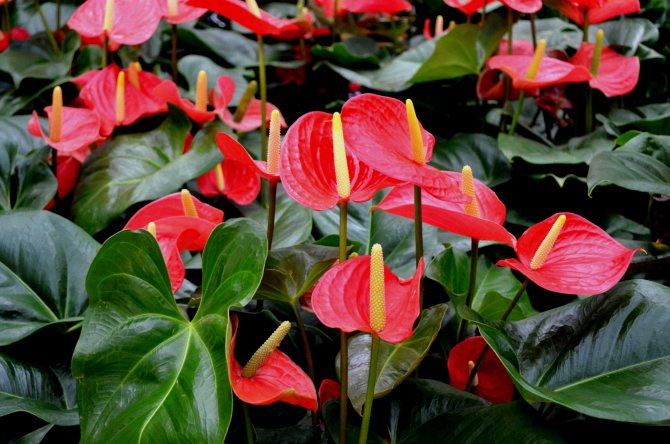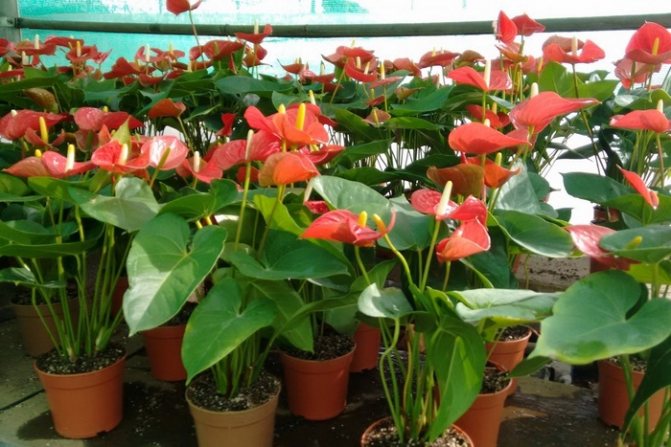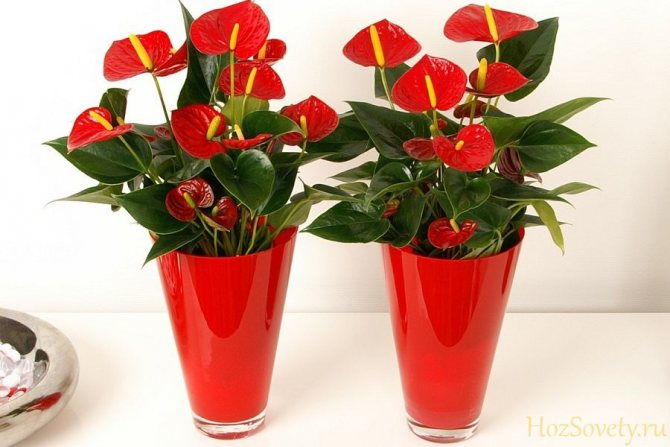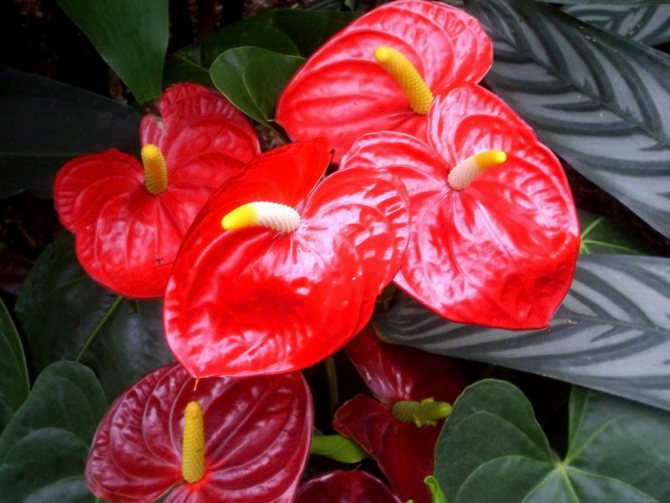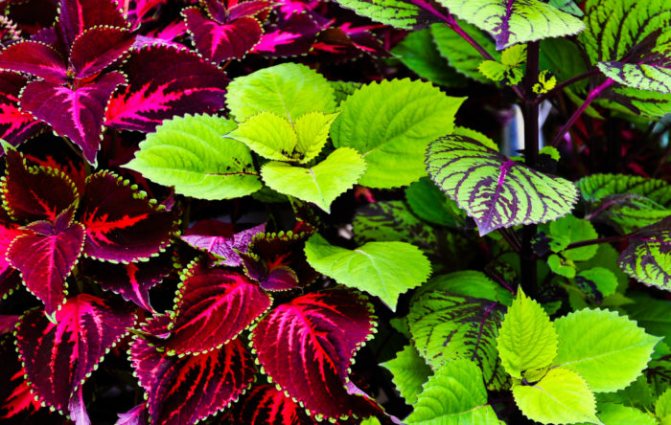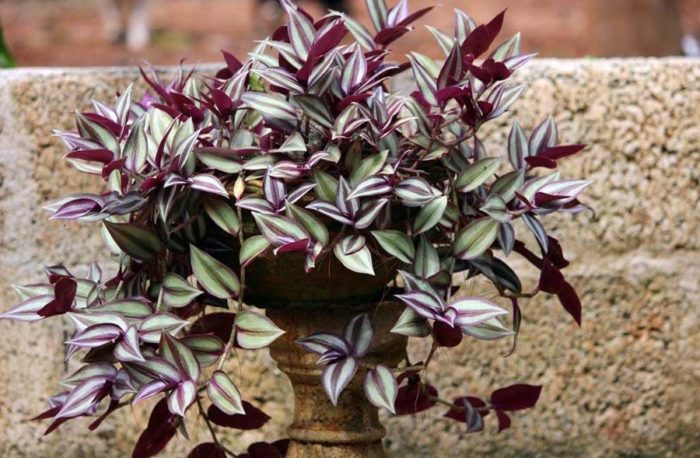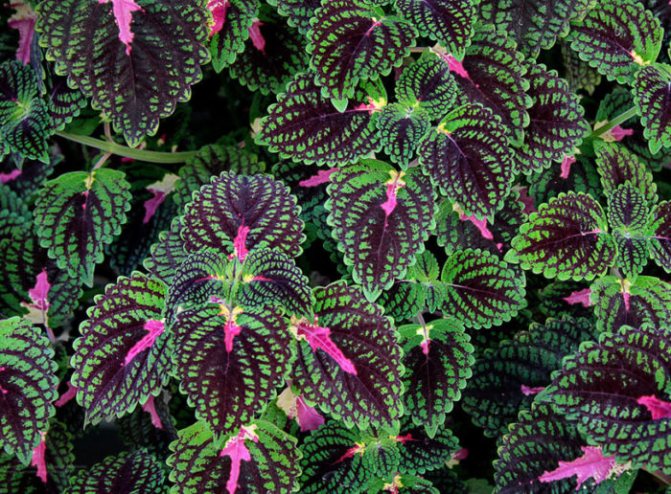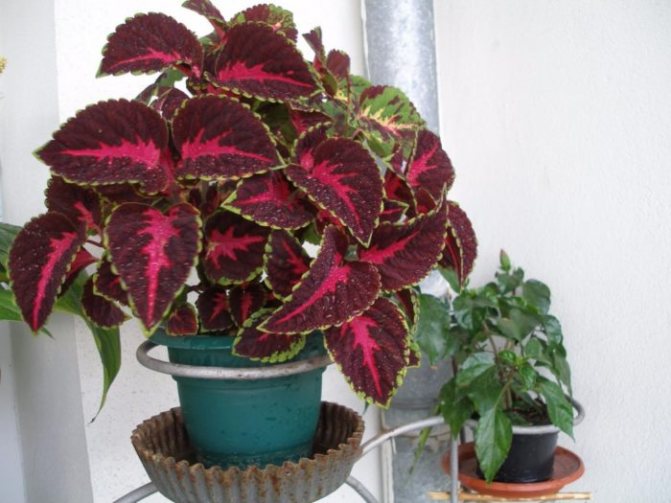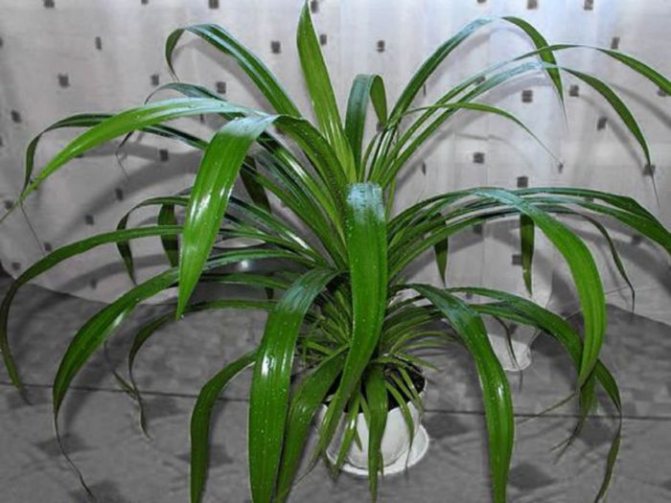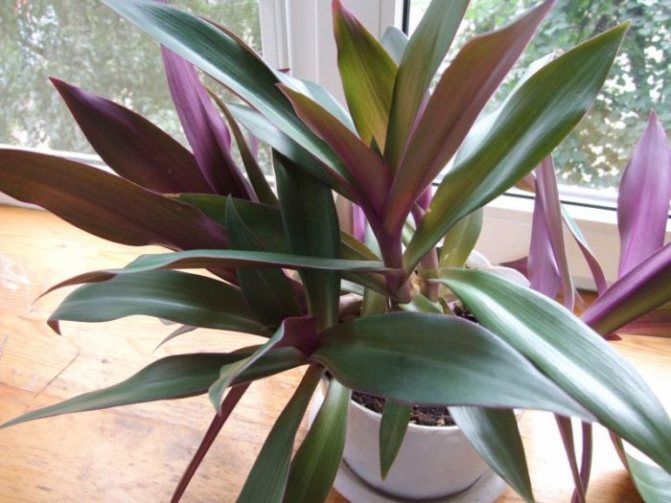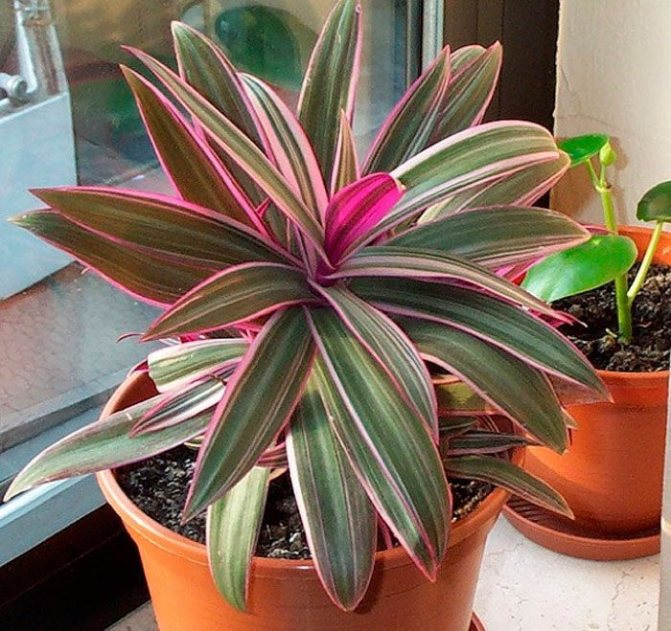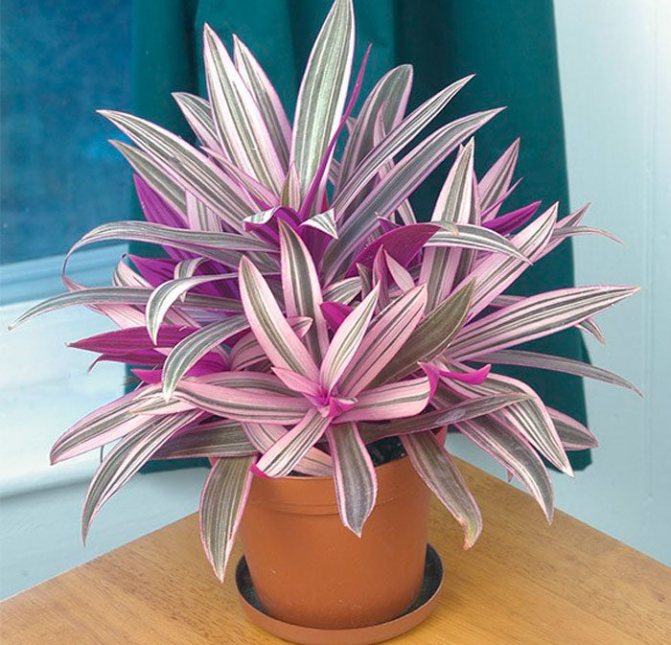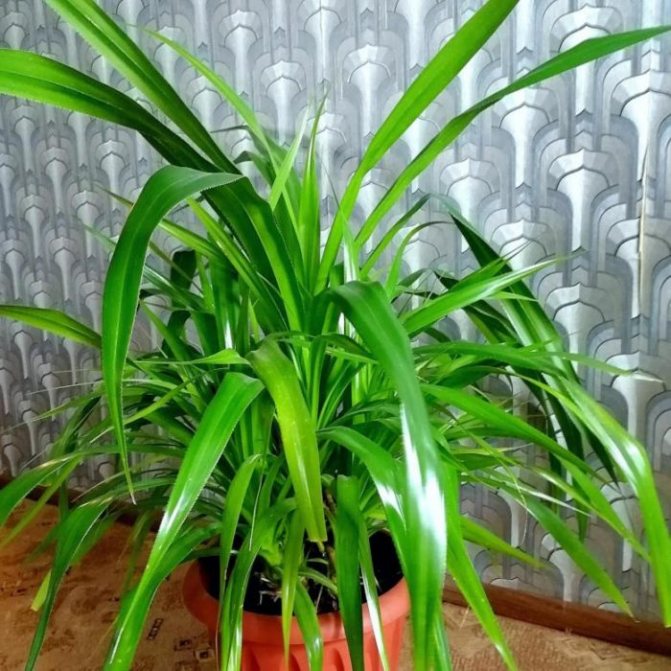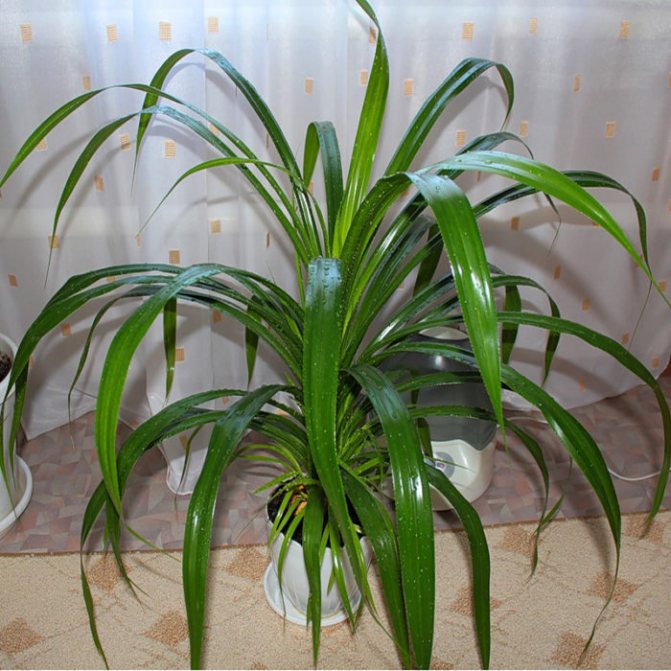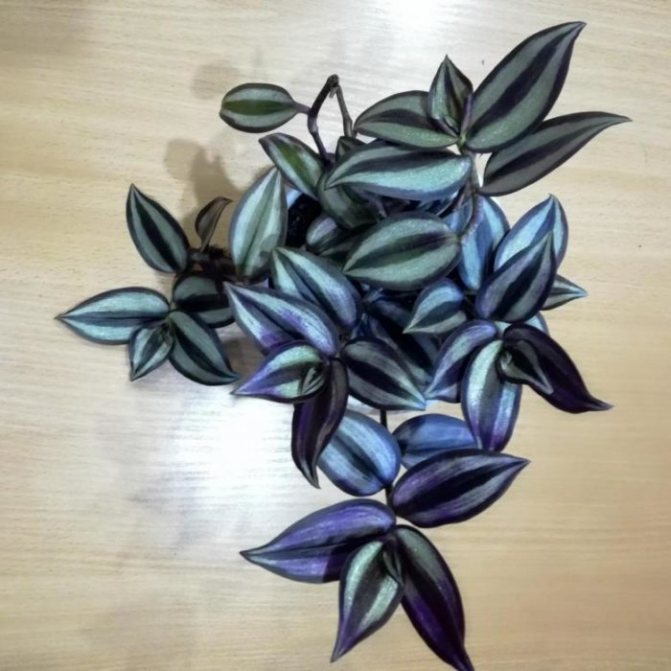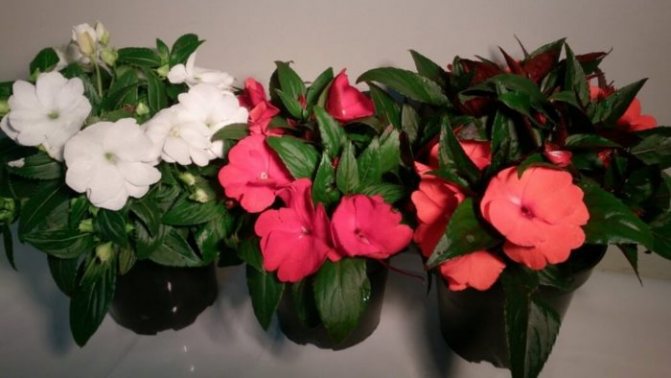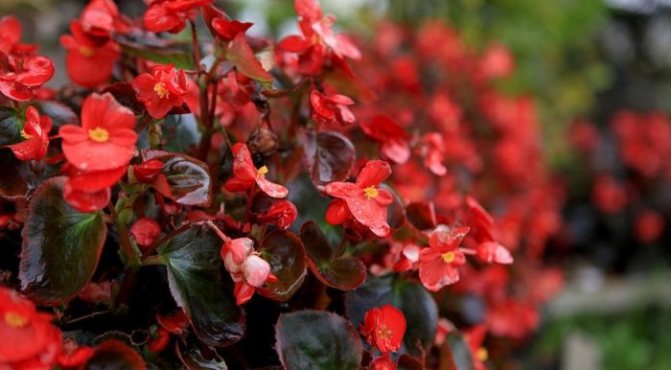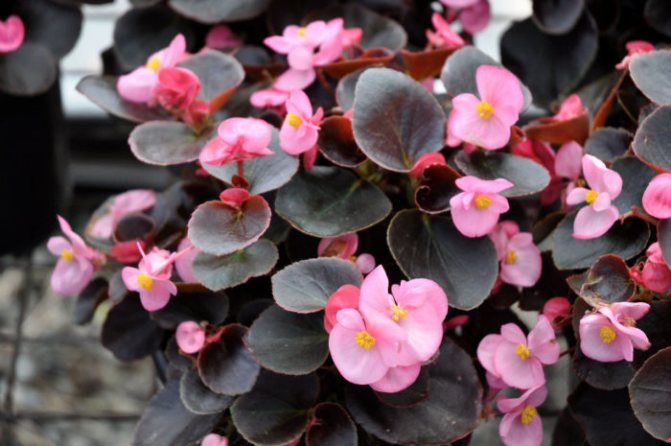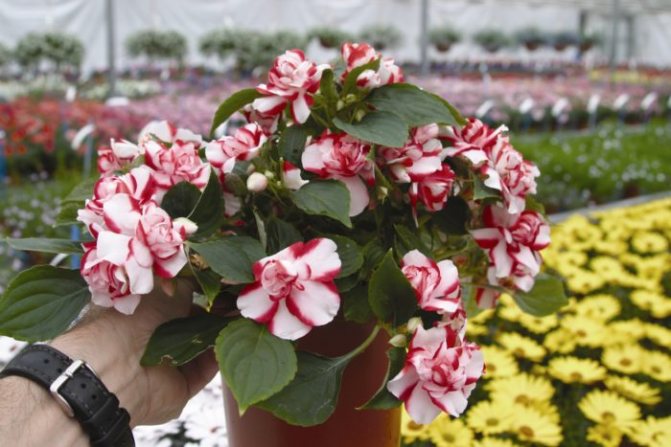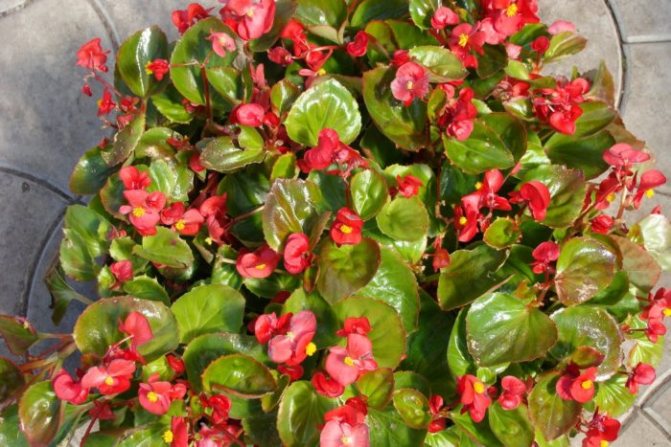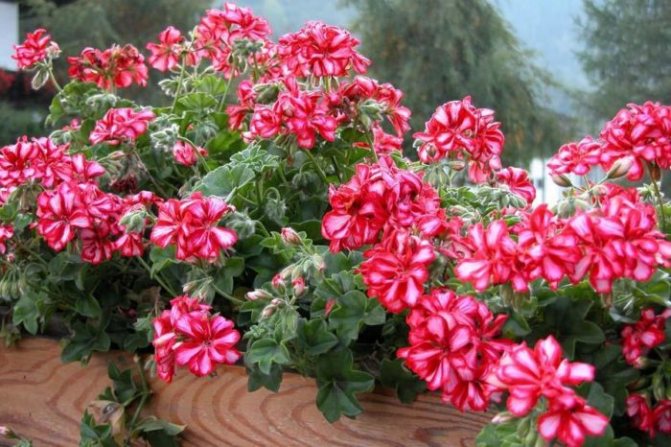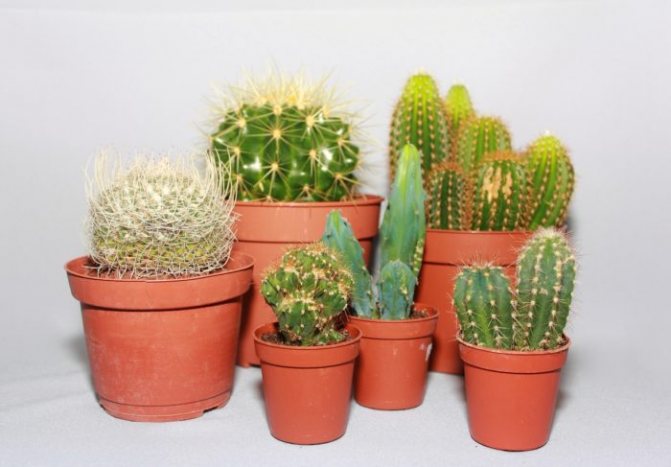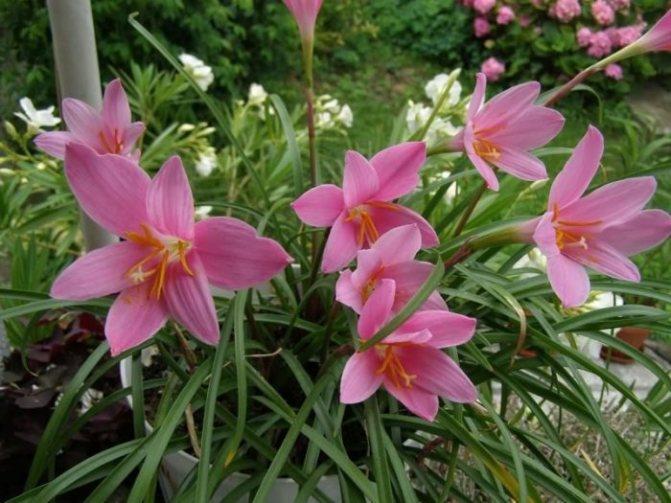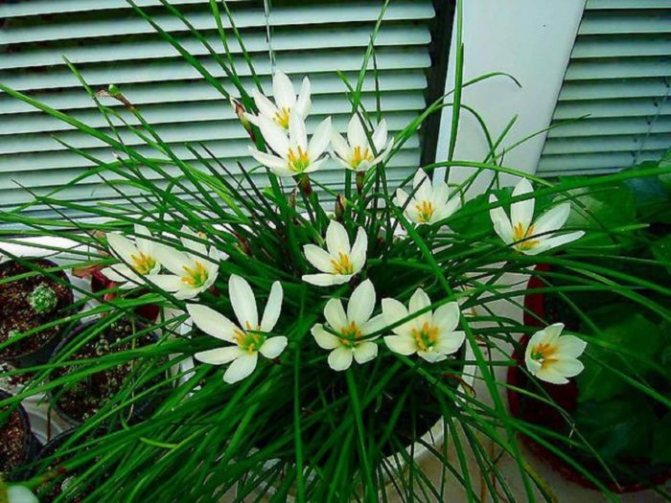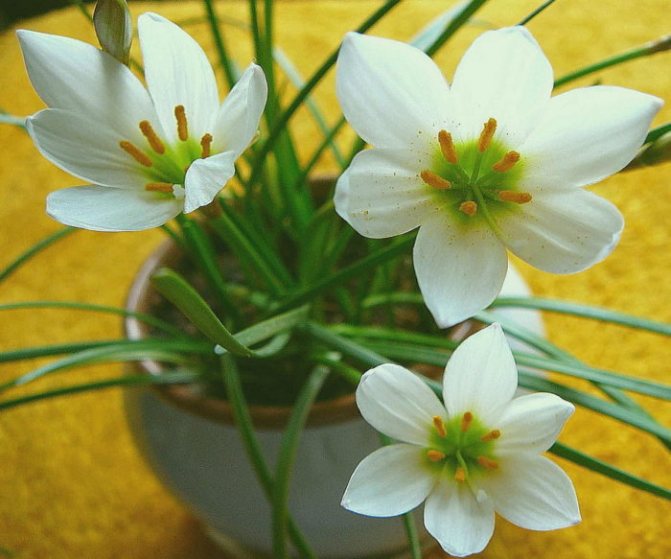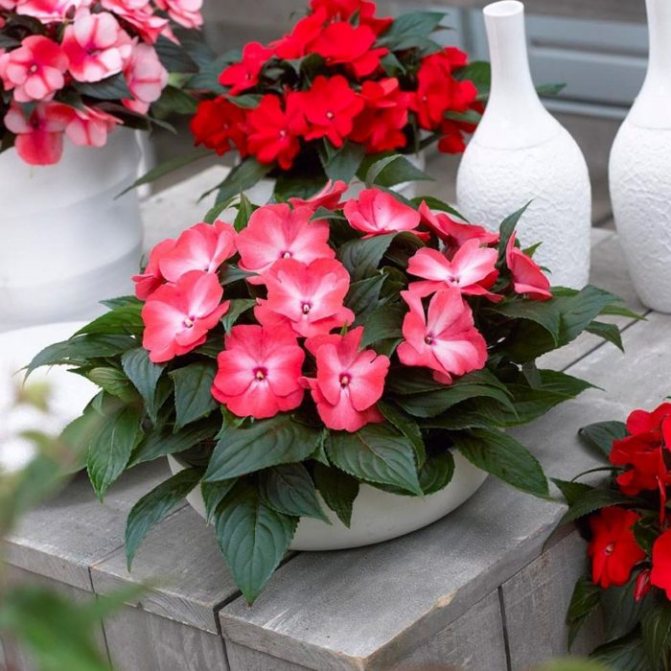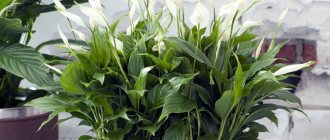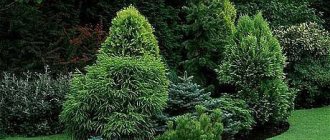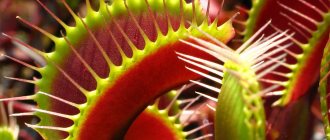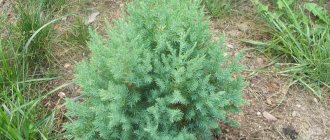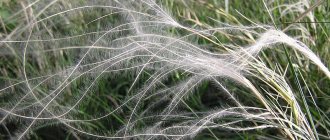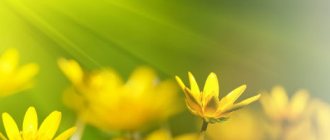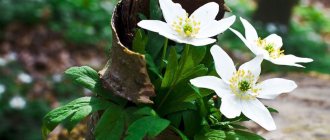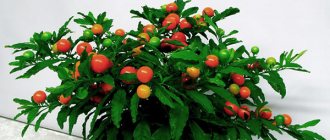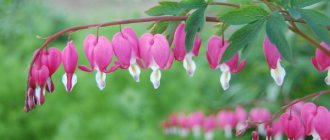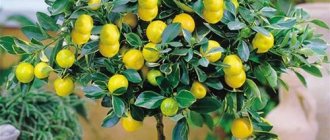Indoor flowers that love moisture take root well in city apartments. These are mainly plants from the swamps of Africa and the Amazon. Although it is hot in these tropical wilds, the undergrowth, where moisture-loving guests initially survived, hardly gets the sun. In such swamps, there is even less light than in city apartments in winter. To choose a flower for yourself, you must at least know the main types of moisture-loving indoor plants.
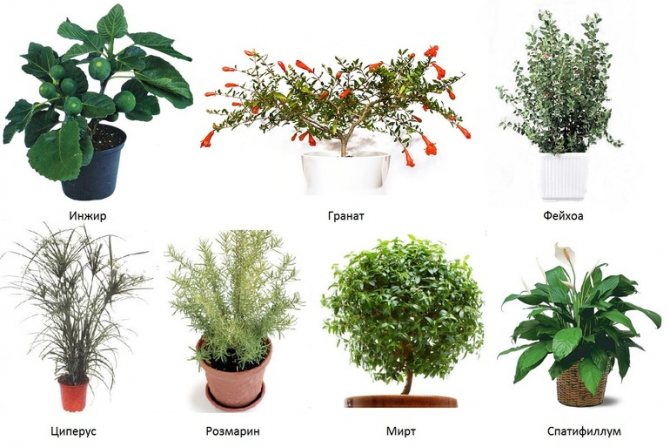
Anthurium
Some call anthurium "female happiness", others - "male". It is difficult to say who he will please more, but what will please him is a fact. After all, it has very unusual yellow flowers, bordered by a juicy red petal leaf. The leaves themselves are dense, juicy, rich green. If you look at the well-groomed blooming anthurium from afar, it seems artificial. It will look especially beautiful next to the spathiphyllum, which has flowers very similar in shape, but only white.
Gardenia (lat.Gardenia)
Gardenia belongs to the Rubiaceae family. The homeland is the forests of Japan, China, India. There are 250 species. Gardenias are evergreen shrubs, sometimes small trees. Require full lighting while observing avoidance of direct rays.
In winter, a temperature of 16-20 ° C is required. Watering: avoid drying out the soil - it should always be slightly damp. To maintain high humidity, use a humidifier, place containers with water around the pot, or place the plant in a wide pan from which water will evaporate. You need to spray.
Azalea soil is used as soil, since it has a fairly high acidity. Fertilizers that increase acidity are used for feeding. After flowering, the plant is cut. Weak and diseased cuttings, cuttings with dried flowers are removed (you can cut off several healthy ones for further rooting).
Read about gardenia transplantation and reproduction here.
Balsam
An unpretentious enough indoor plant that you just need to water and sometimes spray on time. With proper care, it blooms all year round, and very abundantly, so that leaves are almost completely indistinguishable behind its medium-sized flowers. There are a lot of varieties of this flower, they are all unpretentious, but they have inflorescences of different shades. Such a rich palette will allow you to choose a plant that fits perfectly into the interior.


Domestic green giants
Sometimes you want to see a tub with a large plant in an empty corner. Large, moisture-loving plants for the home will survive perfectly in such poor lighting. They will decorate the room and absorb carbon monoxide if they are given the usual conditions - moist soil.
Most Popular Monster Plants:
- Monstera;
- palm trees
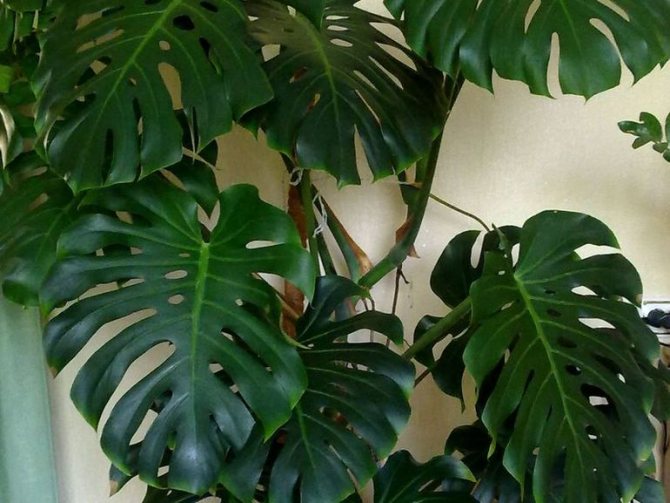

Monstera is a real giant among indoor plants. This is a South American vine that grows up to five meters. Green monsters often live in libraries, reception rooms and foyers of various institutions. It is a plant with large dark green leaves, in which large holes seem to have been cut.
Monstera needs an abundance of moisture in summer, in winter it is satisfied with moderate watering. Leaves should be regularly wiped from dust, which is a good reason to distract yourself and communicate with nature.
Palm trees grow in the tropics, in both dry and very humid climates. They grow when watering is combined with spraying, because the leaves also absorb water. Ideal conditions for palm trees in northern latitudes are a greenhouse.
In your own winter garden with one palm tree in a pot or tub, you need to create a humid atmosphere. The plant is sprayed and trays of water are placed next to it. A damp cloth is thrown over the hot batteries.
The most moisture-loving palm species:
- Bamboo palm, or hamedorea;
- Palm-umbrella, or licuala;
- Fan palm, or livistona.
All of these palms are native to tropical rainforests, have very beautiful leaves, which is reflected in the names. Plants require the ground to be constantly moist. If you forget about watering, they will remind you of yellowed leaves. Over-watering can rot the roots, but palms usually do not suffer from this.
Geranium
The unpretentiousness of this indoor flower has led to the fact that it can be found in almost every home. If provided with sufficient light, flowers will bloom on it throughout the year. They can have very different shades. Geranium does not need frequent watering. It has one more feature - to scare away flies. When purchasing geraniums for the house and wondering where to put it in an apartment, it is worth keeping in mind that the plant is quite fragrant, and its aroma can cause a headache. For this reason, this indoor flower has no place in the bedroom and nursery.
Floral heritage
Moisture-loving houseplants can do without watering for a couple of weeks. They are accustomed to storing water in fleshy stems and leaves. If suddenly watering stops for a while, they act as in nature. The leaves shrink and fall off, releasing moisture to the stem and roots. When a loving grower spares no water, plants grow rapidly and abundantly.
The most common and familiar:
- Tradescantia.
- Ferns.
- Cyperus.
- Begonia.
- Unique moisture-loving chlorophytum
Beauty Tradescantia
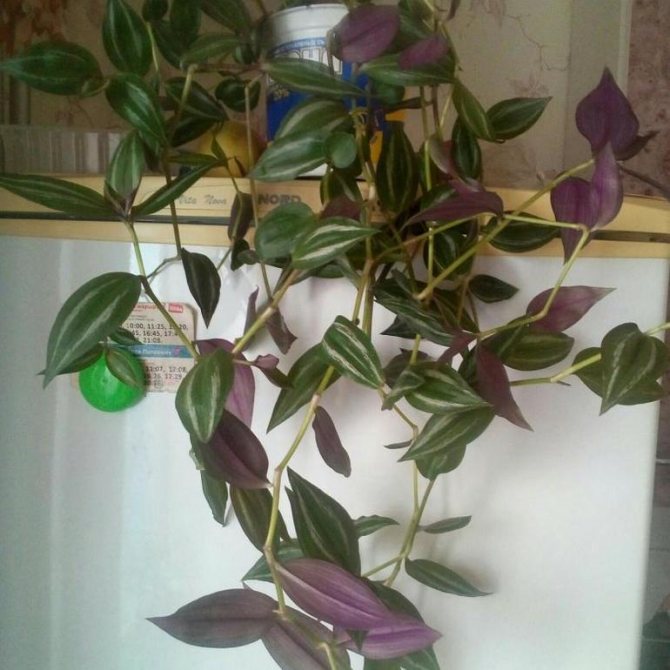

Great-grandmothers did not know the book words, so they gave the plant the apt name "Woman's gossip". Long stems with juicy leaves reach one and a half meters and hang beautifully from pots in the darkest corners. In the interior of the 60s, wall and floor metal stands for pots, painted to resemble a birch trunk, were popular. Tradescantia stems really resemble thin birch branches.
Tradescantia was brought to Europe in the 17th century from America. At home, it is a creeping underbrush plant. There are moisture-loving species and adapted to the conditions of mountain deserts. A plant in nature reproduces by rooting stems. That is why Tradescantia was so popular. It is enough to tear off the stalk, put it in water, and after a couple of weeks the shoot with roots can be planted in a pot.
Many types of Tradescantia have been developed for indoor and outdoor cultivation. Leaves come in all shades of green or with stripes of white, yellow, pink. Tradescantia requires no maintenance other than regular watering.
Ferns features
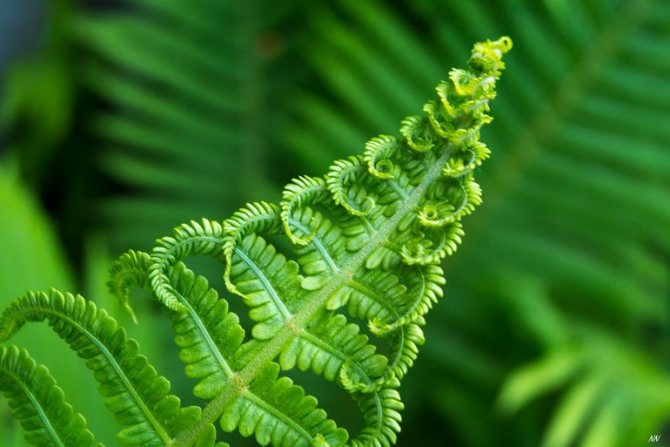

Ferns survived all natural disasters and adapted to the climate of city apartments. Ferns of the genus Nephrolepis are common among flower growers. The most unpretentious sublime nephrolepis, in which anyone immediately recognizes a fern.
Nephrolepis Boston, cordate and others have the original shape of the leaves. They are curly, rounded or narrow. Due to the shape of the stems and leaves, florists like to decorate flower arrangements with ferns.
Ferns thrive with regular watering. If you take the time to sprinkle, the fern will thrive in a shaded area. Theoretically, it can multiply by spores. Florists propagate ferns by dividing rhizomes.
Tsiperus, or swamp feed
In everyday life, it is often called papyrus. Requires that the pot has an abundance of water, a real swamp.At a minimum, there must be liquid in the pan at all times. He is happy if he is planted in an aquarium with fish for beauty. Too dry air in the house is reported by yellowed leaf tips. So it's time to spray it, recreating the climate of subtropical swamps.
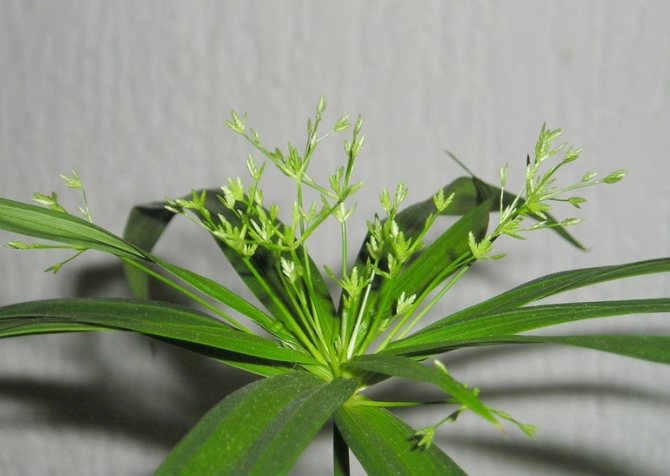

Tsiperus reproduces interestingly:
- All stems for vegetative propagation are placed in the water with leaves upside down.
- A cyperus shoot in the form of a miniature palm tree is turned upside down and the top is placed in the water.
- The plant sprouts roots and is transplanted into the ground.
Sometimes the cyperus is called the cat palm. Some cats climb onto windowsills, dropping pots to chew on leaves. With an abundance of moisture, cat raids are not terrible, the plant grows so that it must be cut regularly. And cats are looking forward to their portion of the cat palm.
Home begonia
A plant for fans of home floriculture. Requires regular, abundant, but metered watering, diffused, but good lighting. Humidify the air around the plant, but do not spray on the leaves. With proper care, it pleases with abundant lush flowers and decorative leaves.
In addition to traditional propagation methods by cuttings or dividing the rhizome, begonia can be propagated by dividing the leaf:
- Pieces of the leaf are stuck into the soil.
- Keep in a mini greenhouse until mini shoots appear at the base.
- Then they are transplanted into the soil.
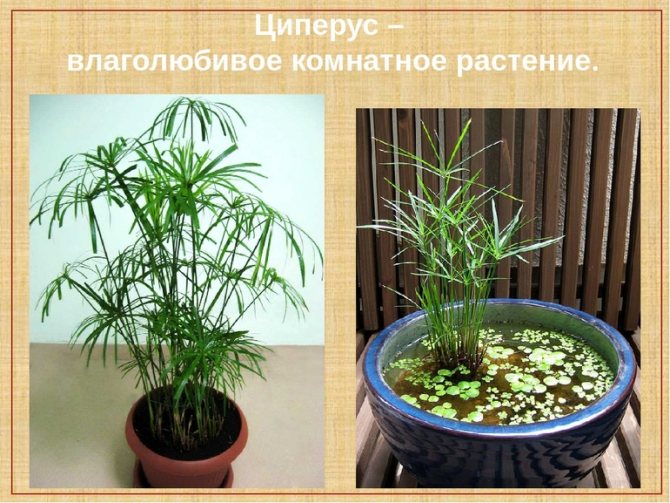

So from one leaf you can get up to a dozen new plants.
Unique moisture-loving chlorophytum
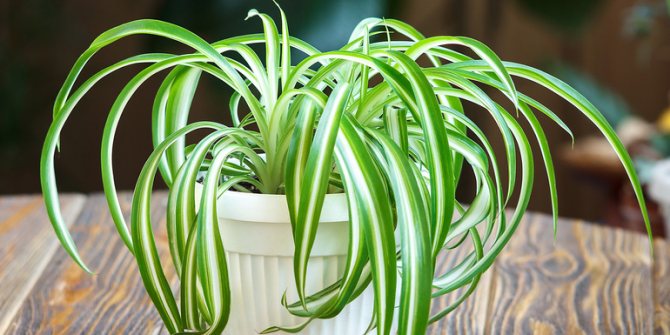

Chlorophytum is worth highlighting among the moisture-loving indoor plants. He is credited with almost magical properties to purify the atmosphere in the house.
This is indeed the case. Of course, it does not purify karma and aura, but the air. It has a unique ability to capture formaldehyde, which is abundantly emitted by plastic electrical appliances and fiberboard furniture. Like any green creature, it greedily absorbs carbon dioxide.
Chlorophytum needs a lot of water to honestly purify the air. With regular watering, it agrees to grow near computers and TVs, in the kitchen and even in the bathroom, if there is a small window there. When the owners go on vacation, chlorophytum will wait for their return without watering. It will dry out the leaves and shoots to retain water in the roots. And it will grow again, like any grass, if it is abundantly watered.
Hibiscus
Many people know this unpretentious indoor flower under a different name - "Chinese rose". It blooms almost all year, but its flowers bloom for a short time - just for a day, after which they are replaced by new buds. When choosing this plant, you should know that its crown must be formed. Otherwise, he does not require special care, so even a novice florist can take care of him.


Fittonia
Perennial undersized plant from South America. This flower loves when it is hotter: 25-26 degrees, but it will feel fine even at +20. The main rule is to avoid sudden changes, otherwise it can lead to stress and the condition of your pet will worsen.


Fittonia loves a well-lit place with diffused light and partial shade. In winter, you can make "supplementary lighting" with fluorescent lamps.
Like any representative of the tropical flora, this flower adores high humidity. So daily watering and pallets of wet expanded clay and pebbles will help the plant feel good. Spray at least once a day and keep away from heating elements. You can transplant Fittonia once a year, while choosing a wide, but shallow pot, since the root system is superficial. You should also remember about good drainage and looseness of the soil. Fittonia blooms from mid-summer to mid-autumn.
See also the video which plants are suitable for dark rooms:
Useful articles:
Indoor jasmine
If you dream of finding a truly elegant indoor flower that blooms with white flowers all year round, then indoor jasmine is just what you need. Its flowers are small, but collected in inflorescences that look amazingly festive, like a bridal bouquet. True, this plant can hardly be called unpretentious: it needs light, regular watering, a certain temperature. But if you are an experienced florist, then you will cope with this task without much difficulty and you will be rewarded with the unprecedented beauty of blooming jasmine. By the way, some of its varieties exude a pleasant aroma.


Nephrolepis
Unpretentious fern from tropical and subtropical regions. Able to clean the air from harmful substances (formaldehyde, toluene) and microbes. Looks best in hanging pots.
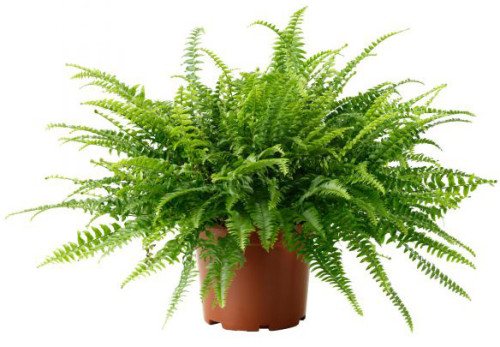

Summer temperature for nephrolepis should be around +20, and in winter - around +15, does not tolerate drafts. Also, you do not need to put it in the sun, it is better to choose a shaded place.
The plant should be kept away from heating and heating systems. It must be often sprayed with water (if possible 2-3 times a day), you can put containers with water next to the pot so that the air is humidified and gives strength to your pet.
Daily watering is necessary, while making sure that no stagnant water forms in the soil. For feeding, you can use diluted mineral and organic fertilizers, best of all in the spring-summer period.
Kalanchoe
One of the most common indoor plants is Kalanchoe. This is due to the fact that it is unpretentious. Kalanchoe does not need frequent and abundant watering, Kalanchoe grows well when there is a lot of light, but it feels no worse in the shade. The temperature drop also does not affect the well-being of the Kalanchoe. Kalanchoe blooms with many small flowers of white, red or yellow color.


Moisture-loving herbs
Grasses in nature are used to extreme conditions. These are moisture-loving and at the same time resistant plants. If they are forgotten to water, they will turn into a clump of hay sticking out of a pot. They react instantly to fresh water and release fresh shoots. With abundant watering, they turn green and even bloom.
Known species:
- calamus;
- hanging reeds;
- indoor bamboo.
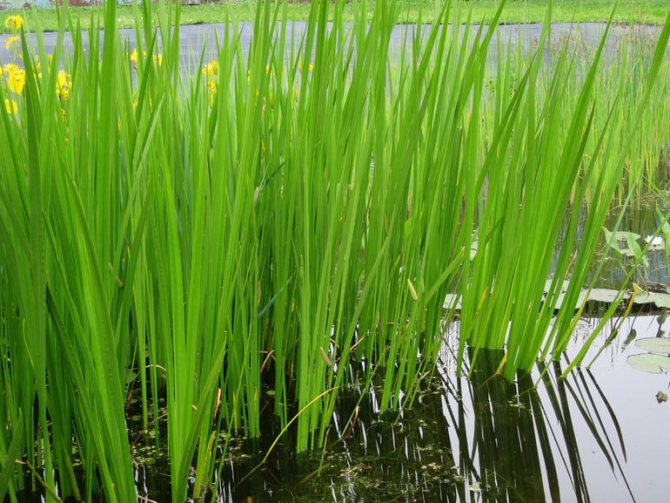

Calamus is marsh grass and it looks the same. Indispensable in indoor mini-gardens as a backdrop for more spectacular moisture-loving plants. In long drawers, it creates a grassy wall for decorating office partitions and window sills in entrances, because it is not afraid of drafts and cold.
But with an unprepossessing appearance, calamus perfectly cleans the air in the room. The plant is used in medicine, and the roots in cooking as a seasoning. Room calamus, which has purified the air and absorbed harmful impurities, is not necessary.
Hanging reeds are marsh sedges with slender stems. The stems first stretch up, then fall. In swamps, bumps are formed in this way, in a pot or flowerpot, reed stalks hang beautifully along the edges, without losing freshness. Flowers in the form of whitish balls at the very tips of the stems. Due to this unusual bloom, hanging reeds are sometimes mistaken for plastic greenery.
Hanging reeds like to keep the pot always wet, but in the winter it needs to arrange a short period of rest for renewal.
Pogonaterum is called bamboo because of its external resemblance, in fact, it is a plant from the family of cereals, native to Southeast Asia. There are tall and undersized varieties. The plant dies quickly without abundant watering, but it is not demanding for other conditions. Designers love it, because this imitation of bamboo will give the right mood to the interior in oriental style.
Spathiphyllum
We already called this indoor flower when we talked about anthurium. He is also called sometimes "female happiness", then "male." Its leaves are slightly more oblong than that of anthurium, and more tender.The white flowers are very similar to the bright red flowers of the antarium. These flowers look like a couple, and they are very often placed on the windowsill next to them, attracting family happiness to the house. After all, they are like two halves complementing each other: just as different and just as similar as a man and a woman, loving each other.


Lithops (living stones)
Lithops is a stone-like succulent plant. It grows in arid places, in rocky deserts, therefore it is extremely unpretentious to care for. It blooms with yellow or white flowers up to 5 cm in diameter.
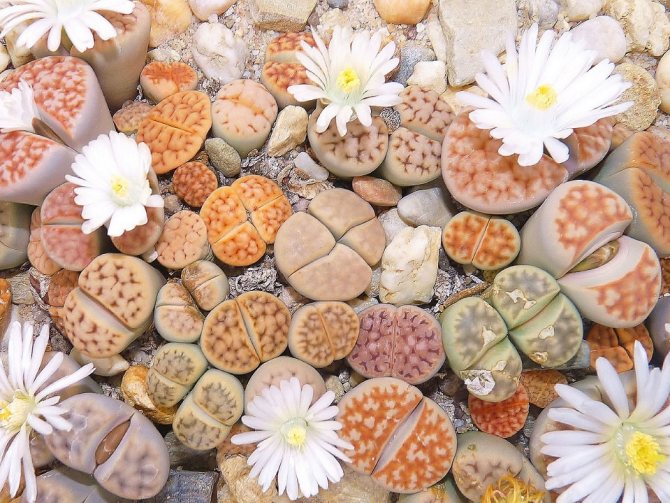

Lithops
Where to put?
The south window is best suited. Lithops does not like changing places, so once again you should not even turn the pot.
How to care?
For planting, you need a medium pot. These plants do not like loneliness, in this case they grow poorly and do not bloom. Therefore, several "living stones" must be planted in one pot at once. The composition of the soil should include leaf humus, red brick chips, river sand and clay. The surface of the soil needs to be decorated with small colored pebbles - it will be more beautiful, and lithops will develop better.
In summer, it will not hurt to humidify the air around the plants from a spray bottle at least once every few days. Watering is moderate. In late July - early August and from November to spring, lithops are at rest, at this time they do not need to be watered. When lithops begin to rest, they tarnish and stop growing.
Where to place plants in the office?
- Large plants such as a palm tree or a large dieffenbachia should be placed in the manager's office or reception areas. There they will look more organic.
- Small potted plants are more suitable for placement on a desktop, windowsill, as well as on a flower shelf.
- All factors must be taken into account for the successful placement of the pot with the plant. For example, being near a battery, a constantly opening door, an air conditioner that will constantly blow on a flower and drafts. After all, it is important that the plant pleases you as long as possible.
- Office phytodesign plays a significant role in determining the location. Flowers and evergreens should look organic in the interior. The oversaturation of the room with flowers turns the office into a greenhouse and creates a frivolous appearance of the organization.
- The absence or lack of plants in the office creates unnecessary rigor. Such a room lacks the zest that is created by flower arrangements.
Plants in the office are part of nature in our highly urbanized world.
Violet blooms all year round
Indoor violets are called Uzambara saintpaulias. This plant has 1500 species. The variety of shapes and colors is breathtaking. At floristic exhibitions, delicate violets attract the attention of even absolutely indifferent people. The shape of the flower petals is simple, double, edged, star-shaped, corrugated. All this splendor blooms magnificently and violently.
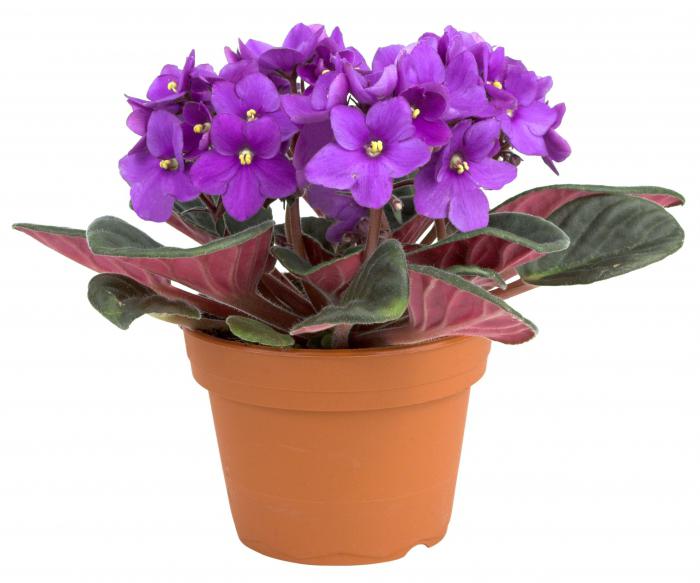

A delicate indoor flower blooming all year round, is very loved by women. In every house that grows plants, there must be Saintpaulias. The flower prefers light, direct sunlight is contraindicated for it. They will destroy him. It is a thermophilic plant. A cold window sill with drafts does not suit him. Water the violet with care so that water does not get into the outlet. Otherwise, the flower will start to rot and die.
Criteria for choosing a plant for the office
- Do not forget that plants are living organisms, and office routine can kill them.
- Don't get naughty roses, orchids or gloxinia on the office table.
- You shouldn't even have cacti.... It is very difficult to provide the necessary cold wintering for them in working conditions. And their ability to absorb harmful radiation from computers is just a myth.
- Office is Spartan conditions for the green brothers: not all plants will be able to survive the ten-day New Year's holidays, uneven watering and vandalism by irresponsible staff, including pouring leftover tea into a pot.
Cymbidium
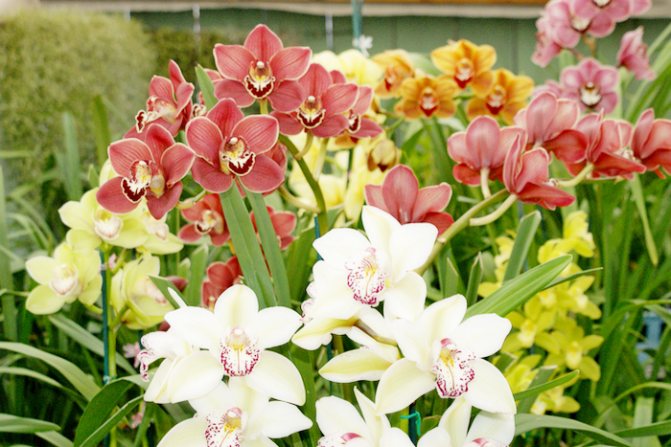

Cymbidium is a relatively easy-to-grow orchid with long, persistent flowers that appear in winter and spring. The Cymbidium variety "Snowgirl" is characterized by a multitude of flower spikes and is therefore incredibly popular. Cymbidium leaves are long and narrow. Also available in white, olive, pink, cream or red. Cymbidium loves light rooms, with moderate to high temperatures in the 16-21 ° C range. Fertilize once every two weeks, in winter once a month. It is necessary to maintain a constant moisture content of the substrate.
What is shadow
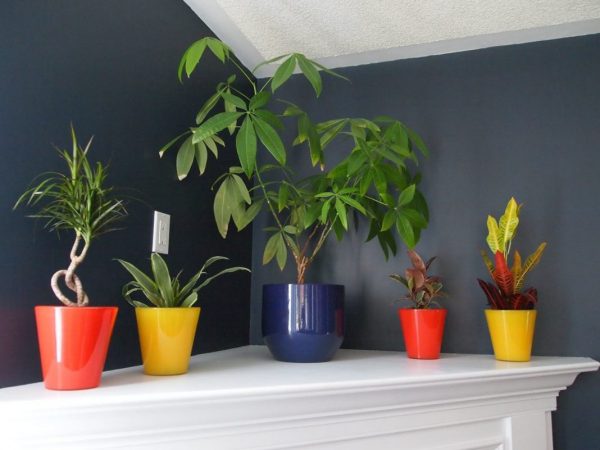

This uncomplicated childish question is not so simple when it comes to floriculture. After all, the concepts of "shadow", "penumbra" are very relative, subjective. For example, the sill of the northern window for a plant will already be a shadow; light-loving specimens will not grow here. If you go further, into the depths of the room, then at a distance of a meter, or three meters from the window, the light flux will differ 10 times, although the human eye practically does not catch this difference.
There is a simple and time-tested technique developed by flower growers. If you, with good eyesight, are able to read a newspaper text in this place at noon, then shade-tolerant copies can be placed here. If the newspaper is difficult to read, the place is too dark, even for hardy plants. Yes, you can keep a flower pot here, but additional lighting will be required, especially in the autumn-winter time. And this is a completely different topic of conversation.
Pelargonium
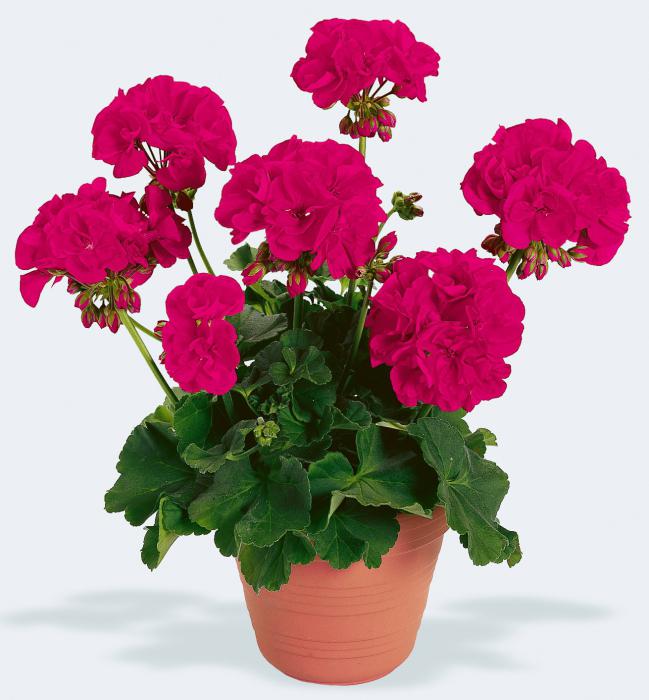

This plant pleases with magnificent double forms and a variety of colors. Pelargonium of red, white, pink, crimson shades blooms very abundantly and almost continuously. The plant can be shaped as you like, make it higher or lower. It is enough to put a pot of pelargonium in a shaded place - and it will stretch in height. At the same time, the beauty of the flowers will remain the same. With moderate watering, dry air will not harm the plant.
Is it possible or not to grow fruit-bearing trees
If the owner of the summer cottage dreams of planting fruit trees, then he needs to work hard so that the roots have normal conditions for development. In this case, you will have to make drainage, raise and add soil, which is prepared from equal parts of soil and sand. Or go the other way - choose high places for planting and plant trees in filled flower beds, and make several drainage grooves to drain water.
What types of fruit trees are planted in the lowlands
In order to pick apples, pears, plums, cherries at the dacha, and the site had a well-groomed appearance during its formation, it is worth adhering to symmetry, taking into account the properties of plants, size, shape, flowering time. Choose those varieties of trees, shrubs that are not afraid of excessive moisture, can grow on heavy soils, and can withstand frosts. Quince, mountain ash, hawthorn are not afraid of excessive moisture. Cuttings of apple trees, pears, cherries are grafted onto mountain ash, this ensures the presence of a decorative and fruiting tree in the country.
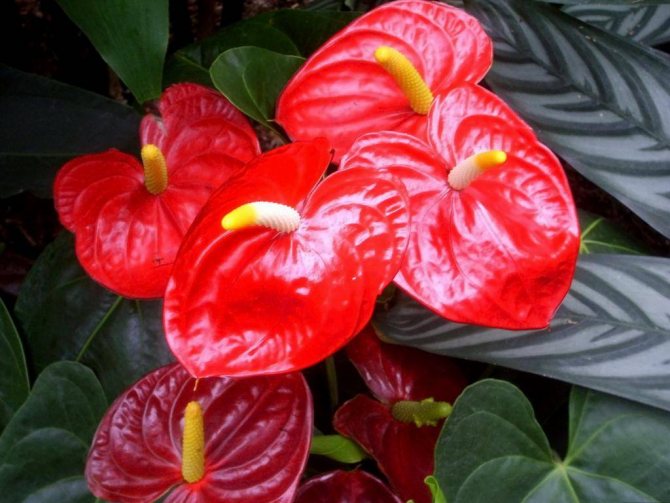

Moisture-loving trees will be able to decorate the summer cottage. These include Karelian, hanging, weeping, common, warty, white, woolly birch. And fluffy, black, dwarf, curve, Manchu, iron and Schmidt birch. They grow in boggy and areas with a high water level willows, various varieties of maple, alder. Among conifers, it is worth highlighting juniper, fir, thuja, spruce.
Nolina (bokarneya)
Nolina has an unusual sealed barrel, reminiscent of a bottle. For this it is also called the "bottle tree". It is thanks to this structure of the trunk, in which moisture accumulates, that nolina can live without water for a long time.And if the heat is intense or the sun is beating down, bokarnea leaves gather in dense bunches, reducing evaporation.
Therefore, nolina can grow normally without your participation. She needs light and abundant, but very rare watering. It is not at all necessary to spray it.
Begonia
She pleases and amazes the imagination in various forms. Even if your collection of indoor flowers consists only of these plants, it will seem unique. Begonia prefers warmth, up to 20 degrees, and will not bloom at cooler temperatures. The flower is picky about moisture, but does not like spraying. To prevent the plant from being affected by fungal diseases, it is necessary to remove wilted flowers and leaves. Florists of all times have a special love for this culture for its unpretentiousness.
Euphorbia Mila - Crown of Thorns
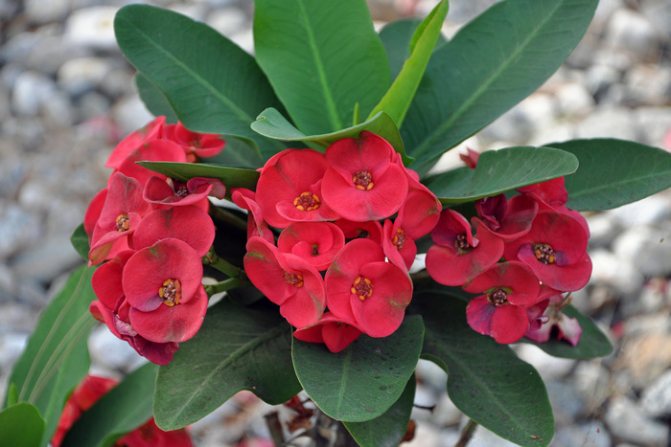

The lovely Euphorbia (Euphorbia milii) is one of the hardiest and most prickly. Decorative pink bracts develop in spring and summer, over a fairly long period. Milkweed shoots are densely covered with sharp thorns. Milkweed juice is poisonous, so be careful when caring for the plant.
Euphorbia Mila loves bright, sunny places with moderate temperatures in the range of 10-15 ° C. Euphorbia should be fertilized every three weeks with a specialized succulent and cactus fertilizer. Water when the ground is slightly dry. Do not flood the plant - it will react with falling leaves.
Abutilon
It is a plant with maple-like leaves. Flowers have the appearance of a bell, can be either single or collected in an inflorescence.
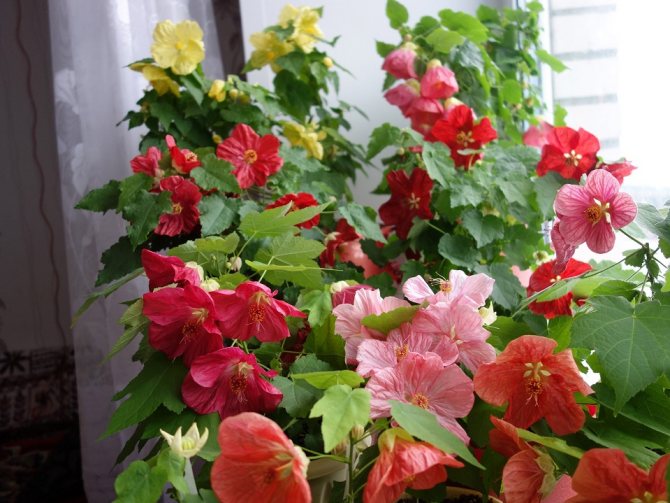

Where to put?
It grows best in partial shade, but you can place the pot in the light, the main thing is not on the south window. Does not tolerate drafts. The optimum temperature is 25 degrees in summer and 15 degrees in winter. At lower temperatures, it can shed leaves.
How to care?
Watering plentiful from March to autumn, spraying is encouraged. At other times of the year - as the soil dries up. During the flowering period, it is advisable to feed with mineral and organic fertilizers twice a month. It is recommended to remove weak shoots during growth, and to trim the crown at the end of winter.
Transplant annually or every few years - the plant blooms well only when it is cramped in the pot. Grows well in hydroponics.
Platizerium
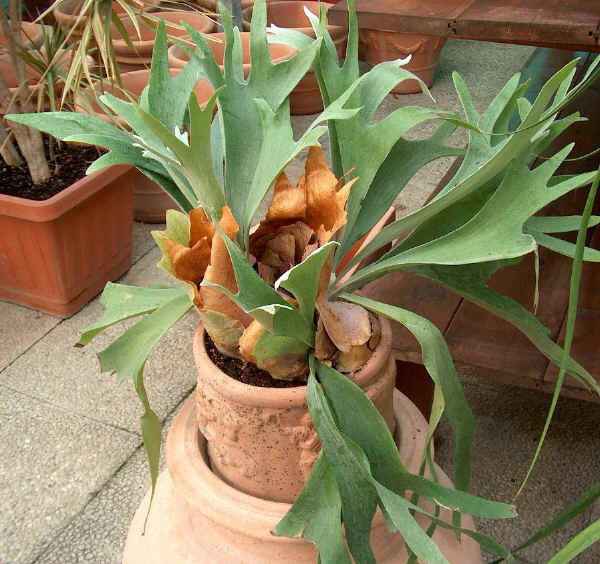

A moisture-loving plant has a rather exotic appearance, the name of which translates as "flat horn" or "antler". The appearance of its leaves really resembles antlers.
Platizerium needs constant warm and humid air. It is best grown suspended on a bark wrapped in moss. It is also possible to grow in the usual flower pots, but at the same time you need to use a substrate for orchids, which should be constantly moistened. Provide it with good protection from drafts and drying out. An important point in care is a careful attitude to the surface of the leaves - the small villi that provide moisture access to the plant are very sensitive, therefore mechanical influences are contraindicated. It is strictly forbidden to wipe the leaves!

